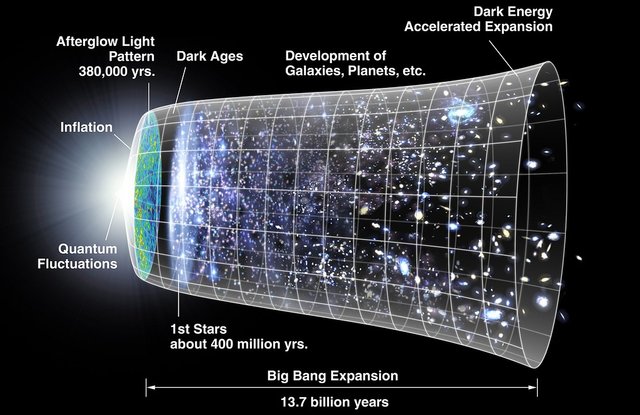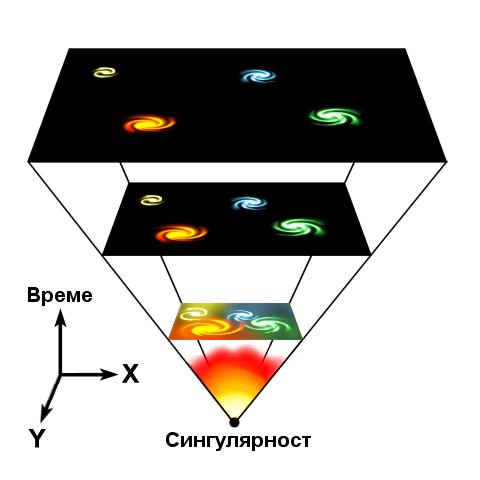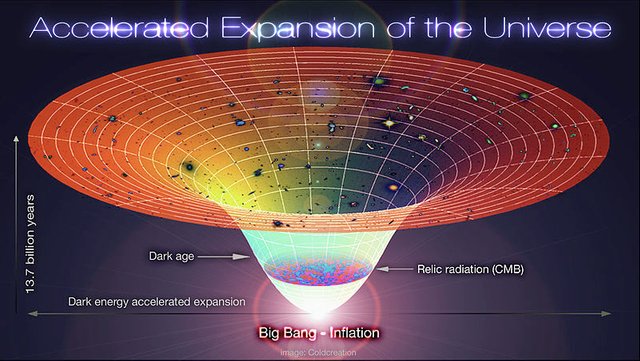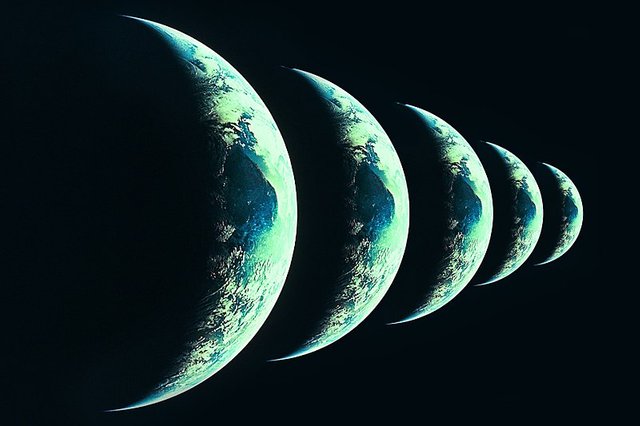Various human cultures in the past have different stories about the creation of the universe, depending on their beliefs. But science has its own perspective on this big question.

In the past few years, astronomers have been doing research on the formation of the universe. They believe that by understanding the history of the formation of the universe and the physical processes that occur, we will get a clue as to why the universe is created. One generally accepted theory today is the Big Bang, that is, the universe begins with a point of singularity that then expands and forms the world we know today. This idea may sound crazy, but astronomers believe that Big Bang can occur naturally based on two undisputed theories to date: quantum mechanics and general relativity.
Particle Formation and Space-Time
What triggered the Big Bang? First, we must review it based on quantum mechanics. Quantum mechanics is a branch of physics that deals with small objects such as atoms, electrons, protons, and other small particles. This is a successful theory and underpinning technological advances in the field of modern electronics. Based on quantum mechanics, the vacuum is not completely empty. Space is actually filled with particles and antiparticles that appear and disappear instantly. They do not last long so cannot be observed directly. However, we can study the characteristics of the particles and the antiparticles based on the effects they generate when they appear and disappear.
Let us change our discussion of very small objects such as atoms to very large objects such as galaxies. The best theory to explain such a large scale structure is the general theory of relativity proposed by Albert Einstein. This theory is very powerful to explain how space, time, and gravity work. General relativity is very different from quantum mechanics. Even to this day, scientists have not been able to unify the two theories completely (read here for more details).
One thing scientists find is that when quantum theory and general relativity are used to study space-time on very small scales, the spacetime becomes unstable. Space-time is no longer continuous and transforms into discrete "bubbles". That is, space-time is quantized and can fluctuate (appear and disappear instantaneously), just as in the case of particles and antiparticles.
The Universe of the Bubble Space-Time
We know that not only particles and antiparticles can emerge and disappear from the void. Even space-time bubbles can behave that way. But, if the space-time bubble is unstable and can last only a shorter period of time than the blink of an eye, how can the space-time bubble form the universe we live in today? One solution is the cosmic inflation theory.
Today, scientists agree that our universe starts from an event called the Big Bang. All matter and energy that exist in the universe initially unite in a very small point (singularity point) and then explode and expand. The development is still ongoing until now and has been proven by astronomers based on the fact that most observed galaxies tend to move away from us.
The cosmic inflation theory proposes that in a split second after the Big Bang occurs, the universe expands very rapidly, even much faster than its current development. This theory was proposed by a physicist named Alan Guth in the 1980s and later developed further by Andrei Linde. The main idea is that the universe expands very rapidly, from the size of an atomic nucleus and enlarges to the size of a grain of sand, in a split second. As the development slows down, the force field that triggers inflation turns into the matter and energy that fills our current universe. Although it sounds very strange, the theory of inflation fits into the facts that exist today. One is that the theory can explain why the cosmic background radiation (the remaining light left by Big Bang) is almost smooth and uniform in any part of the sky. If inflation does not occur, it should not look like it does today.
The Universe Flat
Inflation also provides a tool for astronomers to determine what the geometry of the universe looks like. It is also important to understand why the universe can be created out of nothing. Einstein's theory of relativity teaches us that the space-time we live in has three possible forms. The first possibility is a flat shape like a table surface. The second possibility is that the shape is curved inward (closed) like a ball surface, so if you walk far enough from a point in a certain direction, you can arrive to the same point when you start walking. The third possibility is that its shape is curved outward (open) like a saddle horse surface. So, which form is right?
Maybe you've learned that the magnitude of the triangle angles if summed will be equal to 180 degrees. Note, however, that the statement is true if you draw the triangle on a flat surface (eg flat paper). If you draw a triangle on the surface of the ball, the number of angles of the triangle will be worth more than 180 degrees. For the case of triangles drawn on the saddle surface, the number of angles is less than 180 degrees. You can prove it yourself if you do not believe it.
Although the cosmic background radiation we observe today is almost very uniform in all directions of the sky, there are parts of radiation whose temperatures are colder or hotter than the surrounding parts. By measuring the size difference in the background radiation, astronomers can determine the geometry of our universe with the concept of the triangle as before. The result is that we live in a flat-shaped universe.
Universe or Multiverse?
If we look at the story, creating the universe looks "easy". Quantum mechanics teaches us that "nothingness" is so unstable that the change from "nothing" to "being" is inevitable. The initially tiny spacetime bubble can turn out to be a vast universe due to cosmic inflation. But does it only happen once? If a space-time bubble can inflate into the universe, what prevents other space-time bubbles from doing the same thing?
This is what gave rise to the idea that the universe is not really single. Andrei Linde proposed that the bubbles of space-time will expand and form their own universe. The other universe may be very different from the universe we live in. For example, the space dimension is not three (length, width, height) but five or more. Its gravity may also be tens or even thousands of times stronger or weaker than our gravity. It may even be the material that is formed, unlike the materials we know today. However, up to now, we have no strong evidence that other universes exist.
There are still many mysteries about our universe waiting to be solved.
best regard @t4r1
Reference :
http://www.bbc.com/earth/story/20141106-why-does-anything-exist-at-all
https://www.ukessays.com/essays/sciences/how-was-the-universe-created.php
Krauss, Lawrence M. 2012. A Universe from Nothing: Why There Is Something Rather than Nothing. New York: Free Press.
Weinberg, Steven. 1993. The First Three Minutes: A Modern View of the Origin of the Universe. New York: Basic Books.



I can't agree more, your post is well written and factual.
I currently writing a series on the creation of the universe, and some of the points you highlighted here, I also mentioned them in my post. Feel free to check it out.
Downvoting a post can decrease pending rewards and make it less visible. Common reasons:
Submit